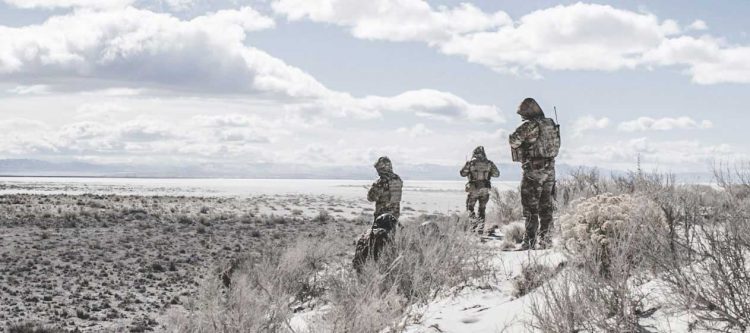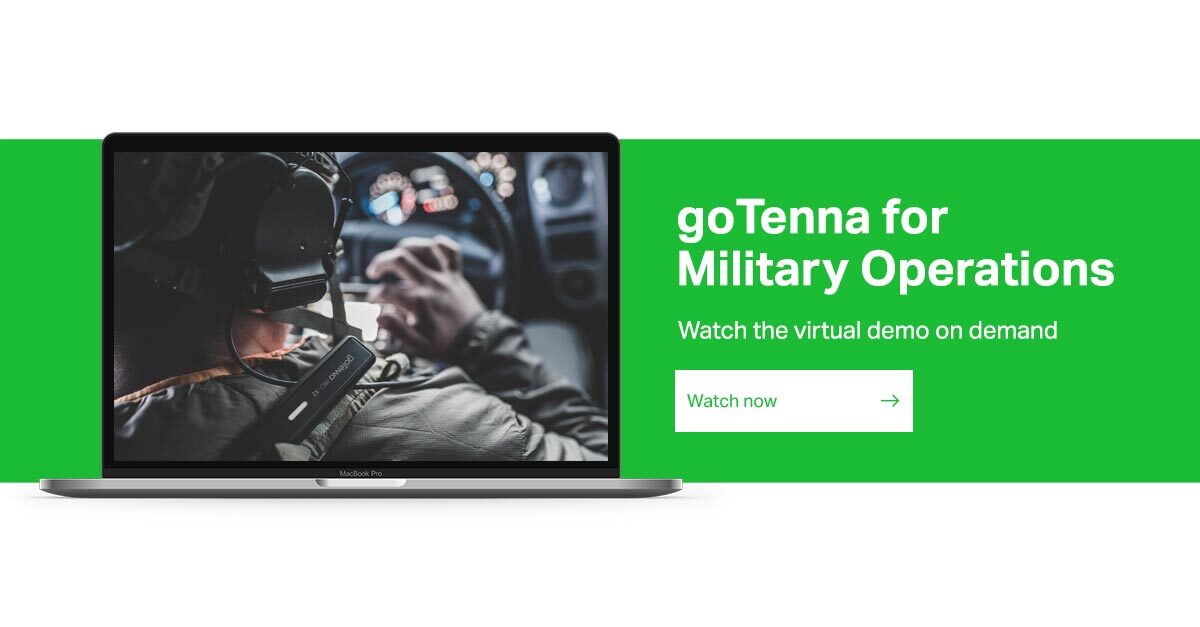Mobile mesh networking – transparency down to the individual warfighter

Our military does absolutely everything necessary to ensure that each, individual warfighter is prepared for action and capable of accomplishing their mission. It’s this individual attention to providing each soldier with the tools, skills, weapons and technologies necessary to succeed that has made America’s military the most effective and capable in the world.
Unfortunately, this granular focus on every single soldier doesn’t extend to situational awareness. That’s because our military doesn’t really have the ability today to see exactly where every single soldier is located. Why does the world’s most advanced fighting force lack this level of insight and awareness? Much of that has to do with where these soldiers operate.
No networks in theater
The United States military has troops stationed in bases across the globe and deployed on every continent. Many of the places where our military is actively deployed and engaged with adversaries are behind our nation in technological advancement and infrastructure, which means that many simply don’t have access to terrestrial networks. And in other places where our military operates, they simply may not trust the existing network infrastructure to be as secure and reliable as needed.
An alternative could be to run new terrestrial networks to these areas. But that could mean running network infrastructure through inhospitable terrain or even through territory controlled by our adversaries, which would immediately put it at risk to be compromised.
This is a problem for today’s military because many of their weapons platforms and applications are network-enabled. That includes many of the tools that they can utilize for situational awareness. The result is that the military is often forced to rely on large, military-grade radios for connectivity and situational awareness, and those can come with limitations.
Awareness at the unit level, not the brigade level
Today’s large, military-grade radios are incredibly adept at delivering connectivity, advanced communications capabilities and situational awareness for the military. But they’re large. They’re also extremely expensive.
That may not seem like such a big deal for an organization with an operating budget approaching $700 billion, but it is. The United States Department of Defense (DoD) has to stretch those dollars to cover investments in weapon systems development, base maintenance and repair, and any number of other expenses, so resources can be tight.
Ultimately, not every soldier can bear having a giant radio or a full satellite terminal on their back. And the military can’t afford to give them all one. So, with logistics and cost control in mind, the military has elected to predominantly distribute these radios to team leaders and other ranking military members. But that keeps them from having a truly accurate, individual soldier level of awareness of the battlefield.
That’s an important distinction, since senior decision makers and military leaders can only really know where a brigade is, or where a unit is. They may not know where every single soldier in that brigade or unit is at any given time. Here are some examples of the kinds of trouble that can cause:
- Dropping ordinance – many maritime and land skirmishes receive air support. If the situational awareness of the leaders calling for air support and the aircraft providing it is at the unit level or brigade level, there’s a better chance that not all individual soldiers are safe from friendly fire.
- Airborne infantry – when warfighters jump out of planes, there’s a good chance that they’ll wind up somewhat scattered on the ground. If there is only one radio for an entire unit, it could be difficult to find and recover all airborne troops in a timely fashion.
- Injured soldiers – as teams are leaving a target area, they may find that people are missing, forcing them to go back into the target area and re-engage the enemy. This exposes the rest of the team to danger to look for the missing soldier. But what if another team and found them injured and carried them out? With greater situational awareness, they’d know where each soldier was and could potentially avoid re-engaging the enemy needlessly.
Luckily, there is a solution that can give military leaders a better, more granular level of detail in their situational awareness – next generation mobile mesh networking.
One soldier, one node
Mesh networking is radio technology that effectively operates by relaying a signal from one radio device – or node – to another. This allows connectivity across incredible distances and enables situational awareness even if there is no terrestrial network available.
What’s even more exciting about goTenna’s advanced mobile mesh networking solutions is that they’re significantly less expensive (less than 10 percent of the price of larger, military-grade radios) and extremely small. This means that they can be deployed to each and every individual deployed soldier.
When utilized, the node connects with a warfighter’s mobile device either via a physical connection of low-output Bluetooth. It requires no existing infrastructure or network hardware be implemented or installed. This means that it can be employed quickly, as the mission dictates. Each node then displays its physical location to all of the other nodes on a map, delivering soldier-level situational awareness.
Also, thanks to the small size and weight of goTenna’s mobile mesh networking nodes, it can be very easy to provide coverage and situational awareness to an entire battlefield or region. Since each node effectively accepts and then rebroadcasts the signal to other nodes, by simply attaching a node to any number of military platforms – such as weather balloons or unmanned aerial vehicles (UAVs) – coverage can be provided from overhead to a wide geographic area.
Our military is the best prepared and most effective in the world partly because each, individual warfighter is given everything they need to be successful and accomplish their mission. That granular level of focus and attention should also apply to the military’s situational awareness. With goTenna’s mobile mesh networking solution, there is no reason why we should only have a brigade-level or unit-level of situational awareness since they make it possible to know everything going on across a battlefield at the individual soldier level.








No Comment